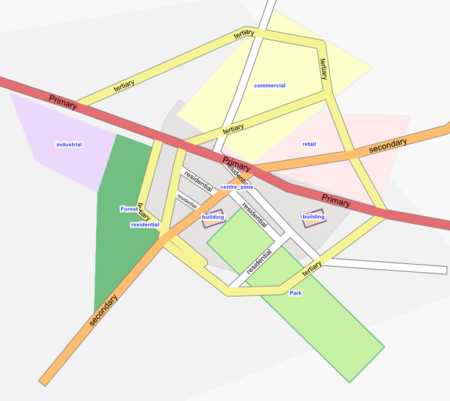Proposal:Centre zone
| centre_zone | |
|---|---|
| Proposal status: | Abandoned (inactive) |
| Proposed by: | dieterdreist |
| Tagging: | landuse=centre_zone |
| Applies to: | area |
| Definition: | for city centres and sub centres |
| Statistics: |
|
| Rendered as: | * |
| Draft started: | |
| Proposed on: | 2008-09-20 |
| RFC start: | 2008-09-20 |
| Vote start: | * |
| Vote end: | * |
Summary
landuse=centre_zone is a tag for central areas inside settlements (village/town/city).
Description
landuse=centre_zone is a tag for (relative to the context) high density centres with generally mixed use like residential, commerce, administration, culture, restaurants, hotels and pubs (these are Examples. Not all of them have to occur at the same time in order to be centre_zones). It can also apply to centres of villages, where it will be somehow smaller than in big cities. Often the centres will have been grown historically. Some big cities have more than one centre.
Useful combinations
- use tourism=attraction to mark village/town/city-centres as touristically interesting
historic
if the centre is historic, there could be subtags to describe this:
- historic=yes for tagging this in a general and very rough way (still useful when searching interesting places on a map)
main_period
- main_period=1500-1600 would be mainly 16th century
- main_period=-1000 would be 1000 BC
centre_type
centre_type=sub_centre - use this for local centres, that are not considered main centre of the whole city/town/village. Probably exists only in bigger cities.
centre_type=main_centre - use this for the main centre, in big cities there could be several main centres, while in villages and smaller cities I wouldn't expect more than one centre.
Example
The rendering rules are:
<rule e="way" k="centre_zone" v="yes" layer="-5">
<area class="settlement-centre_zone"/>
</rule>
and the CSS-Class
.settlement-centre_zone { fill: #e5e2e2; stroke: #dddada; stroke-width: 0.2px; }
rendered directly after the residential-areas.
